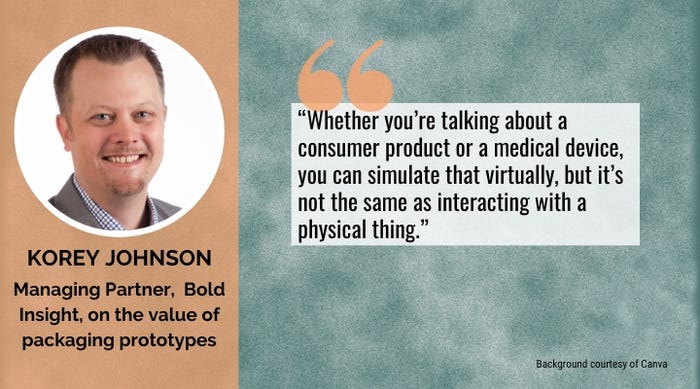User-based research, enhanced visual elements, and early co-development of product and packaging support IFU designs for medical devices.

According to research, 70% of human factors (HF) practitioners cite instructions for use (IFU) design and content as common drivers of FDA requests for information (RFI) when reviewing HF protocols and submissions. The reason: IFUs and labeling are often treated as an afterthought when they should be given the same consideration as the device they accompany — especially when that device is a complex drug-delivery system.
Korey Johnson, managing partner at Bold Insight, explains that it can be easy to overlook IFUs and labeling associated with medical device or combination products because the focus during product development is on the design of the device.
“What developers and manufacturers should be doing is placing equal emphasis on the design of those materials — right along in lockstep with the design of the device itself early on,” he says.
In FDA submissions, manufacturers commonly cite IFUs as a mitigation for risks associated with the use of medical device and combination products. In turn, FDA’s RFI may flag a deficiency or require a change to instructional materials to further mitigate those risks in IFUs.
Sooner is better for IFU design.
Johnson recommends conducting research with users of the product early and often to address the challenges associated with creating IFUs.
“That’s a general mantra of the human factors and user-experience field: The best time to conduct research with the end users on how the product is actually used is as early as possible,” he says. “That’s how you inform the ongoing development of the device.”
No doubt the device needs to be functional before putting together accurate IFUs. At the same time, Johnson advises against waiting until the device is ready to go to market before considering IFU design. Virtual research of devices and IFUs can be helpful to some degree before the device is functional; however, there is no substitute for the actual product.

“Whether you’re talking about a consumer product or a medical device, you can simulate that virtually, but it’s not the same as interacting with a physical thing,” says Johnson. “There’s additional fidelity that you have when you use a physical prototype, and you can observe different types of interactions.”
Scorecards offer proof, track progress of IFU design.
Johnson points out that the development of IFUs requires a multifaceted team of experts, some of whom may not be familiar with the design of the device or product. Furthermore, considering input from stakeholders with varying perspectives is challenging — as is the overwhelming amount of data that pertains to the development or design of instructional materials.
Over the years, Johnson has seen his clients struggle with the design of their IFUs.
“Navigating all of the requirements both from a standards and a guidance perspective, as well as a stakeholder perspective, is difficult,” he admits.
To help clients overcome IFU design challenges, Bold Insight developed a labeling scorecard to evaluate instructional materials and compliance with standards. The scorecard generates two scores: The Letter of the Law and the Spirit of the Law.
Because IFUs can take on different formats and media, not all guidance recommendations align with best practices in instructional and user-centered design. For each finding from the objective Letter of the Law assessment, the IFU is further assessed for compliance with the Spirit of the Law principles of user-centered design.
In manufacturers’ discussions with FDA and their internal communications, the scorecard serves as documentation of progress over time, as well as justification that improvements have been made.
Johnson shares the following examples of general design recommendations for improving IFUs based on one client’s evaluation: Additional visuals for preparing the product, additional visuals for administering the product, and making adjustments to the layout and design.
… leveraging digital assets, such as Quick Response (QR) codes that link to a video or step-by-step tutorial, are becoming more commonly used as mitigations to reduce use-related risk and more widely accepted by evaluating agencies.
The scorecard is intended to be a diagnostic tool, and recommendations are customized for each client. Johnson notes that leveraging digital assets, such as Quick Response (QR) codes that link to a video or step-by-step tutorial, are becoming more commonly used as mitigations to reduce use-related risk and more widely accepted by evaluating agencies.
About the Author(s)
You May Also Like





